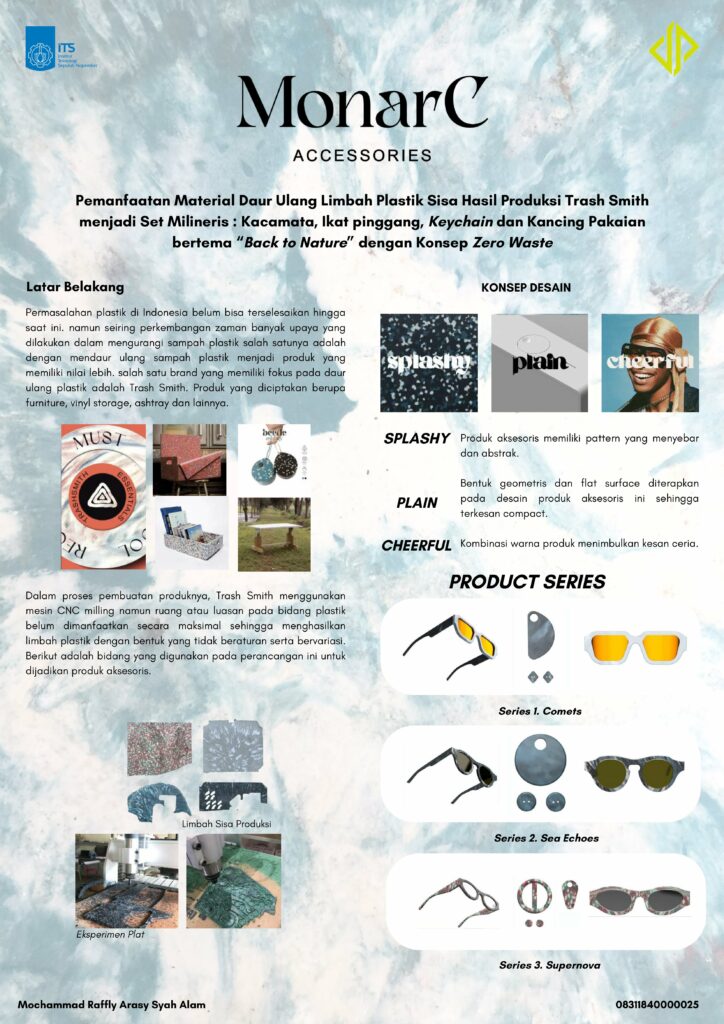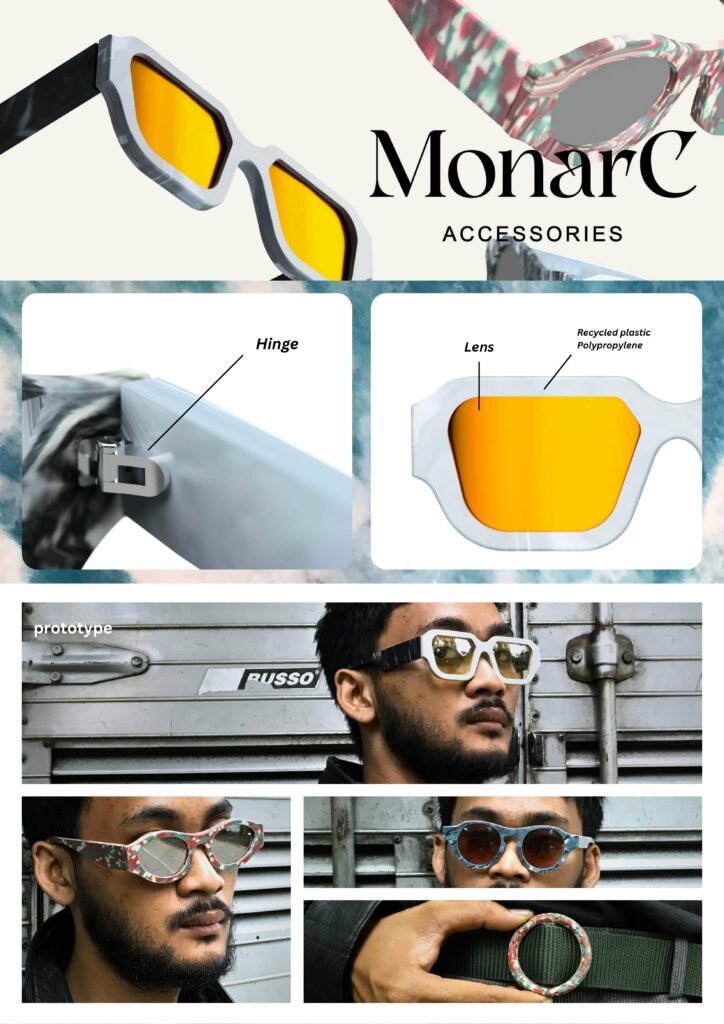Based on the findings of Sustainable Waste Indonesia (SWI), the proportion of waste generated is 60% organic waste and 40% inorganic waste, with the largest type of waste being plastic waste, proven to account for 14% of the total waste generated. Along with the times and increasingly advanced technology, the demand for plastic is also increasing every year. Based on BPS data in 1999, the number of plastic imports with the type of Polypropylene (PP) has increased with an amount of 136,122.7 tons in 1995 to 182,523.6 tons in 1999. Unused production waste has disadvantages such as uneven surfaces and holes in the surface. Therefore, the output product that can be produced from uneven surfaces is to produce small-sized products such as millinery. Now fashion is an object that includes clothes, accessories worn not only functions as a body cover and self-adornment but becomes a medium of communication in expression to show self-identity. Utilization of residual waste from production at Trash Smith by applying the concept of zero waste, namely minimizing residual waste from production to the maximum. The plastic waste obtained has a varied and irregular shape, so layouting is done on plastic waste through several stages including scanning, 3D modeling, and layouting.


